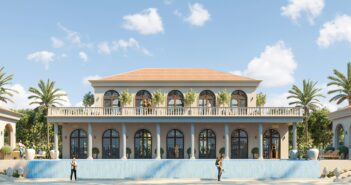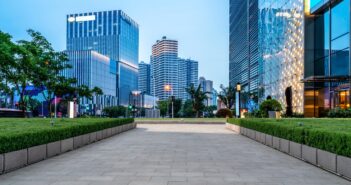
LTCG advocacy adds insult to injury of home buyers
If the removal of indexation benefits with Long Term Capital…

If the removal of indexation benefits with Long Term Capital…

Mumbai and Pune together accounted for 63% of the total absorption in H1 2024, followed by southern cities (Bengaluru, Chennai and Hyderabad) at 29%. Mumbai’s share saw an increase from 25% in H1 2023 to 41% in H1 2024, the growth can be attributed to an increase in demand for grade-A warehouses in areas such as Bhiwandi, Panvel, Uran, Taloja, and Ambernath. NCR witnessed a significant decline in its share from 31% to 6% in the same period. Furthermore, Chennai reported absorption of 1.5 Mn sq ft in H1 2024, registering an increase of 191% over H1 2023 due to the low base effect.

In Bangalore, the cap rates for the logistics & warehousing assets continue to remain flat Q-o-Q with significant volume registered in lease transactions. Similarly, rental rates and capital values for Grade A commercial office segment have been flat with no significant change. Though interest rate regime is stable, the impact on the cap rate movement is limited due to transaction volumes and perceived risk not changing much.

India continues to experience positive retail growth, attracting foreign retailers to establish a presence in key locations. Charles Tyrwhitt, a men’s luxury fashion brand from the United Kingdom, opened its first store in Ahmedabad. Additionally, Maison Margiela, a French luxury fashion brand, and Franck Provost, a French beauty and wellness brand, entered the Indian market by opening their first stores in Mumbai and Bengaluru, respectively. Other noteworthy expansions include the opening of stores by international brands, such as the Swiss luxury watch brand Breitling and the American luxury fashion brand Michael Kors in Chennai and Pune, respectively. In addition, the Japanese homeware brand Daiso Japan and the skincare and cosmetics brand ILEM Japan also opened stores in Chennai.

The Indian real estate sector is poised for robust growth in FY25, driven by the country’s strong economic performance and rising demand across residential, commercial, and industrial segments. The IMF has revised India’s GDP forecast to 7% from 6.8% for FY25. Increased urbanization, infrastructure development, and favourable government policies are boosting homebuyers confidence. The residential sector is witnessing a continued surge in demand. Overall inventory overhang has reduced from 3.7 years (2017) to 1.3 years (Q1 CY 2024). Puravankara is expected to experience sustained growth, in line with the sector, supported by a conducive economic environment and evolving consumer preferences.

While 3PL players continued to dominate the demand with about 36% share, space uptake by players from engineering, FMCG and electronics segments was significant with 12-16% share each. Interestingly, both engineering and electronics segments witnessed over 1.7X times leasing activity in H1 2024, compared to the corresponding six-month period of 2023. Going ahead, driven by conducive industry-specific policies and an enabling regulatory framework, diverse segments are likely to propel the industrial and warehousing space demand in India.

Nestled in the heart of Ravet, Presidential Towers boasts a strategic location with seamless connectivity to key destinations. Homeowners will benefit from easy access to the Mumbai-Pune Expressway, Dehu Road, and proximity to renowned IT hubs like Hinjewadi, as well as educational institutions such as Symbiosis University and D.Y. Patil University, healthcare facilities like Ojas Hospital, shopping centers and more.

World Villas brings Scottish-themed architecture to Navi Mumbai, surrounded by natural forest trails and a scenic riverfront. The development boasts exclusive amenities, including the prestigious Club 10 Gymkhana which is inspired by renowned institutions like Bombay Gymkhana and MCA. This exclusive 50-foot tall gymkhana spans 2,00,000 square feet, spread over an expanse of 10 acres. It also features the grand ‘Hall of Fame’ arrival lobby which is 4000 square feet. This exclusive membership club features state-of-the-art facilities, including an IPL-size cricket ground, complemented by a private forest area with walking trails and tree houses. Inspired by the iconic Lord’s and the Oval, the IPL-size cricket ground at World Villas is also home to the expansive Veranda restaurant, a training academy, and a sports shop.

As the Finance Minister Ms Nirmala Sitharaman announced to lower the LTCG (Long Term Capital Gains) from 20% to 12.5%, the stock market took a hit. The analysts across the financial spectrum immediately swung into analysis that the LTCG hike would adversely affect the stock market in the short term but big pocket investors won’t be affected as much as presumed. A section of financial wizards who understand the nuances of personal finance across the asset classes had even bigger a worry – Real Estate. Prima facie what looked like the LTCG being lowered from 20% to now at 12.5%, has in fact hurt the property market the most. Reason: the indexation benefit under Section 48 that is presently available for property, gold, and other unlisted assets have been now proposed to be removed.

The surge in demand for luxury housing has been primarily driven by a growing preference by affluent buyers seeking enhanced amenities and more spacious living areas that complement their multifaceted lifestyle. Additionally, the aspirational class has been on an upward trend, significantly driving luxury sales. Furthermore, the rise in NRI and astute investors in the Indian real estate market has considerably contributed to the heightened demand for luxury properties.
